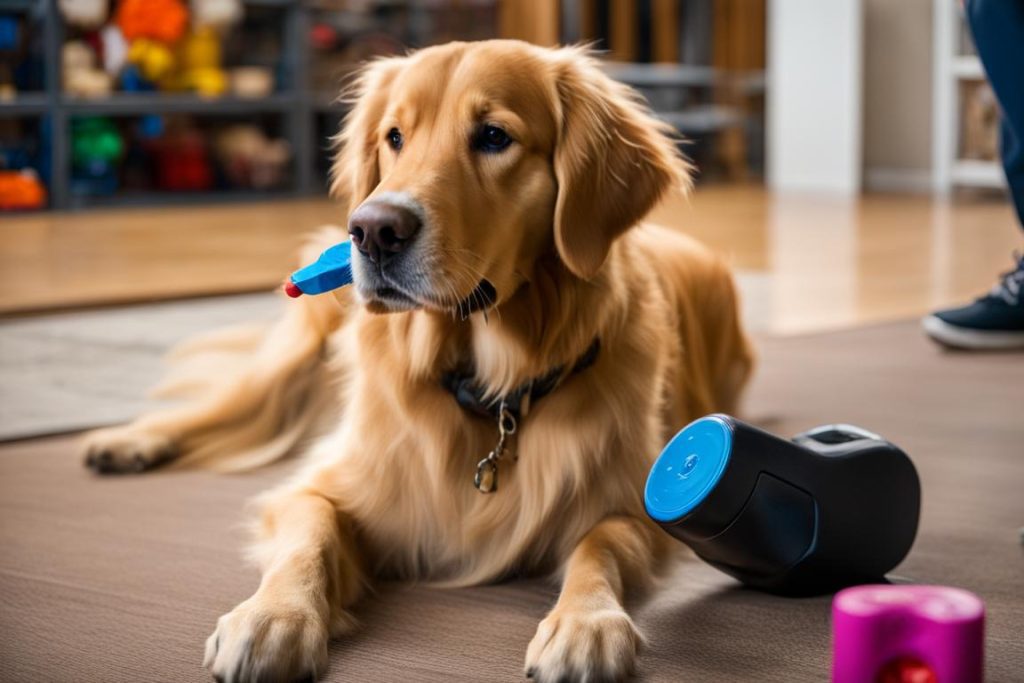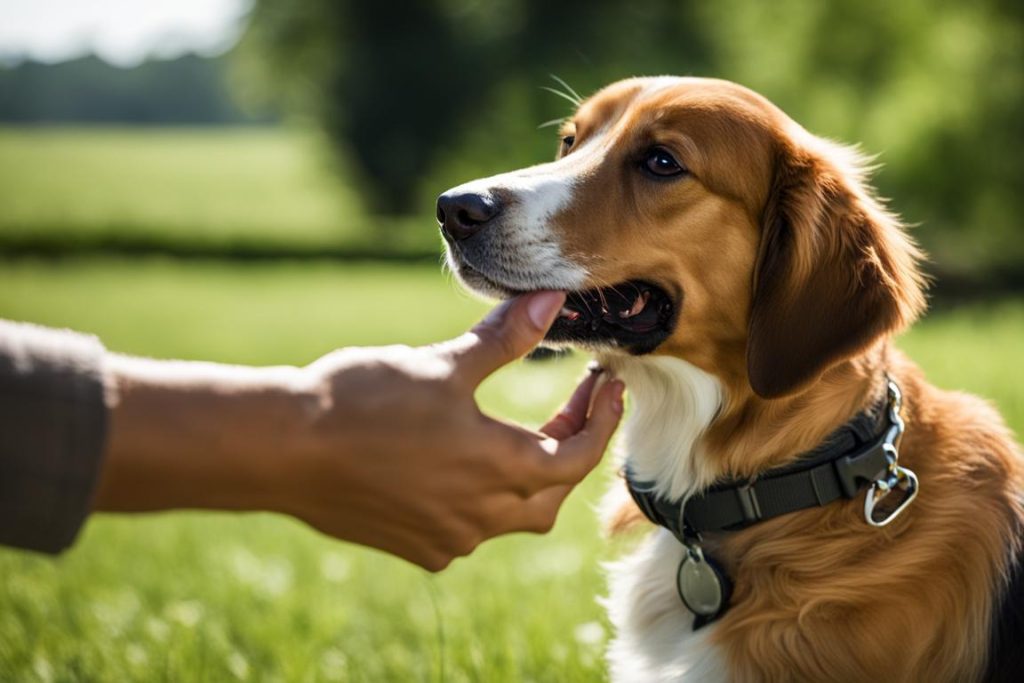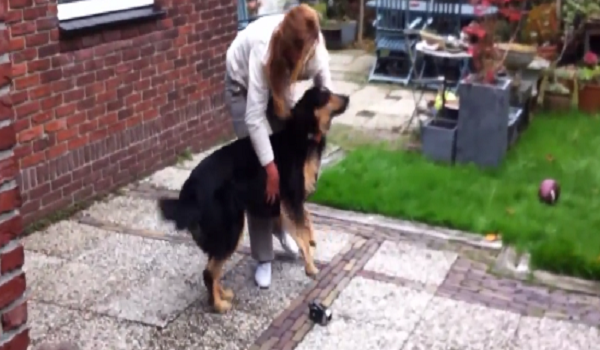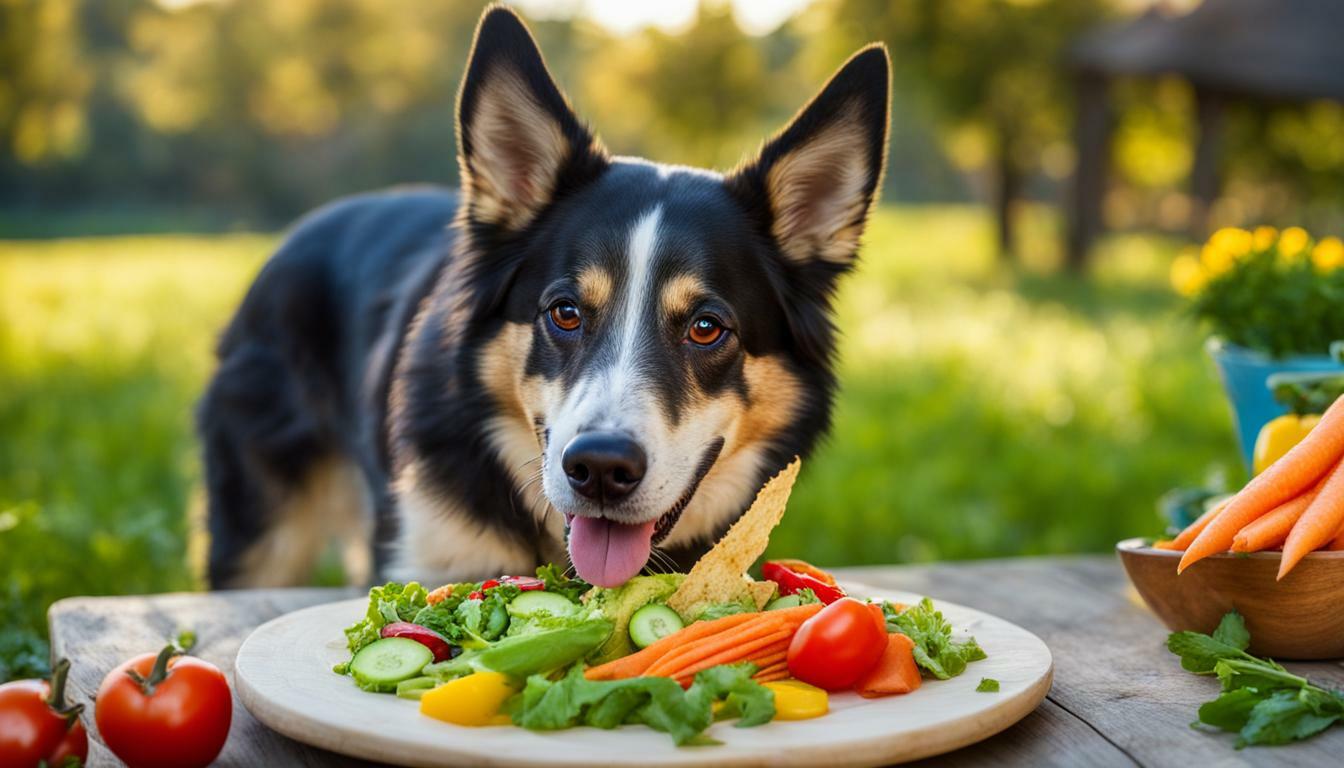Greetings, fellow dog lovers! Today, I’m excited to share with you an effective guide on how to train your beloved canine companion using a clicker. Clicker training for dogs is a positive reinforcement-based method that allows you to communicate precisely with your furry friend during training sessions. It’s a fun and enjoyable way to teach your dog new behaviors and strengthen your bond in the process.
So, are you ready to dive into the world of clicker training and unlock your dog’s potential? Let’s get started with these dog clicker training tips!
Key Takeaways:
- Clicker training is a highly effective method for training dogs using positive reinforcement.
- A clicker is a small mechanical noisemaker used to mark and reward desired behaviors.
- Clicker training is based on the principles of positive reinforcement, which states that behaviors that are rewarded are more likely to be repeated.
- By using a clicker, you can communicate with your dog precisely and effectively during training sessions.
- Clicker training can be used to teach a variety of commands and tricks, from basic obedience to advanced behaviors.
What Is Clicker Training?
Clicker training is a form of positive reinforcement training that uses a clicker as a conditioned reinforcer. The clicker is simply a way to mark a moment and tell your dog exactly which behavior you’re rewarding. It focuses on rewarding your dog for the behaviors you want to see, rather than focusing on what your dog is doing wrong. Clicker training is based on the science of animal learning and is a highly effective way to communicate with your dog during training sessions.
By using a clicker, you can provide clear and immediate feedback to your dog, letting them know precisely when they’ve done something right. This helps to reinforce the desired behavior and strengthen the bond between you and your furry friend. Clicker training relies on positive reinforcement, meaning that you reward your dog for good behavior, rather than punishing them for mistakes.
The benefits of clicker training for dogs are numerous. It allows for more precise communication between you and your dog, making it easier for them to understand what you’re asking of them. It also helps to create a positive and enjoyable training experience, as your dog associates the sound of the clicker with rewards and praise. Clicker training can be used to teach basic commands, advanced tricks, and even modify unwanted behaviors.
Benefits of Clicker Training for Dogs
| Benefits | Description |
|---|---|
| Clear Communication | Clicker training allows for precise communication between you and your dog, making it easier for them to understand and follow your commands. |
| Positive Reinforcement | Clicker training focuses on rewarding desired behaviors, creating a positive and enjoyable training experience for your dog. |
| Enhanced Bond | Through clicker training, you can strengthen the bond between you and your dog, as they associate the clicker with rewards and praise. |
| Flexible Training | Clicker training can be used to teach basic commands, advanced tricks, and modify unwanted behaviors, providing flexibility in training. |
“Clicker training is a powerful tool that allows you to communicate with your dog in a positive and effective way. By using a clicker, you can mark the exact moment your dog performs a desired behavior and reward them accordingly. This method of training focuses on positive reinforcement, making it a highly enjoyable experience for both you and your dog.”
Overall, clicker training is a highly effective and enjoyable method for training dogs. It allows for clear communication, positive reinforcement, and the strengthening of the bond between you and your furry companion. By using a clicker, you can effectively teach your dog a wide range of behaviors and tricks while creating a positive training experience. So grab a clicker, some treats, and get ready to embark on a rewarding journey of clicker training with your dog!
Setting Up for Clicker Training Success
Before diving into clicker training with your dog, it’s essential to set the stage for success. By taking a few simple steps, you can ensure that your clicker training sessions are productive and enjoyable for both you and your furry friend.
First and foremost, you’ll need to obtain a clicker and plenty of small treats. The clicker will serve as a marker to communicate with your dog during training, and the treats will be used as rewards for desired behaviors. Introduce your dog to the clicker by pairing the sound of the click with a tasty treat. This will help your dog associate the clicker with a positive reward.
Next, choose a quiet and distraction-free environment for your training sessions. This will help your dog focus and reduce any potential interruptions. A dedicated space where you can both concentrate will make the training more effective.
| Setting Up for Clicker Training Success |
|---|
| 1. Obtain a clicker and small treats |
| 2. Introduce your dog to the clicker |
| 3. Choose a quiet and distraction-free environment |
Finally, take the time to establish the meaning of the clicker before moving on to specific commands and tricks. Practice clicking and rewarding your dog for simple behaviors, such as sitting or lying down. This will help solidify the connection between the clicker and the reward in your dog’s mind.
By following these steps and setting up for success, you’ll be ready to embark on your clicker training journey with your canine companion.
Your First Clicker Training Session
So, you’ve got your clicker and treats ready to go – it’s time for your first clicker training session with your dog! This step-by-step guide will help you get started and ensure a successful training session.
Step 1: Choose a Quiet Environment
Find a quiet and distraction-free area in your home or backyard where you can focus on training without interruptions. This will help your dog stay focused and make it easier for them to understand and respond to your commands.
Step 2: Define the Behavior
Decide on the specific behavior you want to train your dog, such as sit or lie down. Start with a simple behavior for the first session, and once your dog understands the concept of clicker training, you can move on to more complex commands.
Step 3: Click and Reward
Begin by luring your dog into the desired behavior using a treat. As soon as they perform the behavior, click the clicker and immediately give them a treat. The click should mark the exact moment the behavior occurs, making it clear to your dog what they are being rewarded for.
Repeat this process several times, clicking and rewarding each time your dog successfully performs the behavior. Remember to keep the training sessions short and end on a positive note.
With each training session, you can gradually reduce the use of treats and rely more on the clicker as a reward. Over time, your dog will begin to associate the clicker with positive reinforcement and understand that the sound means they have done something right.
Keep in mind that consistency, patience, and positive reinforcement are key to successful clicker training. With practice and dedication, you and your dog will develop a strong bond and enjoy the benefits of clicker training.
Essential Clicker Training Commands to Teach Your Dog
Clicker training can be a powerful tool in teaching your dog a variety of essential commands. By using positive reinforcement and the clicker as a marker, you can effectively communicate with your furry friend and reinforce desired behaviors. Here are some essential clicker training commands to start with:
Sit
Teaching your dog to sit is a fundamental command that forms the basis for many other behaviors. Hold a treat above your dog’s nose and slowly move it back towards their tail. As their head follows the treat, their bottom will naturally lower into a sitting position. Click the moment their bottom touches the ground and reward them with the treat.
Down
To teach your dog to lie down on command, start with them in a sitting position. Take a treat and hold it in front of their nose, then slowly lower it towards the ground. As your dog follows the treat, their body will naturally lower into a lying-down position. Click the moment they are fully down and reward them with the treat.
Stay
Teaching your dog to stay is important for their safety and your peace of mind. Begin by having your dog sit or lie down. Hold your hand up in front of their face like a stop sign and say “stay.” Take a step back, and if your dog remains in position, click and reward them. Gradually increase the distance and duration of the stay, always clicking and rewarding for success.
Heel
Training your dog to walk politely on a leash is essential for enjoyable walks. Start by standing with your dog on your preferred side and hold a treat by your leg. Begin walking, and when your dog is in the correct position next to you, click and reward them. If they begin to pull or wander off, stop walking until they return to your side, then continue and reward.
Come
Teaching your dog to come when called is crucial for their safety and control. Start in a controlled, distraction-free environment. Say your dog’s name followed by “come” in an upbeat tone. If they come to you, click and reward them. Gradually increase the distance and distractions, always clicking and rewarding when they respond to your call.
Remember, consistency, patience, and positive reinforcement are key to successful clicker training. Practice these essential commands regularly to reinforce your dog’s training and improve their response times and overall behavior. Enjoy the process of clicker training and watch as your dog becomes a well-behaved and obedient companion.

Clicker Training Techniques for Advanced Tricks
Once your dog has mastered the basic commands, you can take their training to the next level by teaching them advanced tricks with a clicker. Clicker training provides a precise and effective way to communicate with your dog during training sessions, making it ideal for teaching complex behaviors. With patience and consistency, you can use clicker training to impress your family and friends with your dog’s impressive skills.
Popular Advanced Tricks to Teach
There are a variety of advanced tricks you can teach your dog using clicker training. Some popular options include:
- Shake hands: Teach your dog to offer their paw for a handshake.
- Roll over: Train your dog to roll over and lie on their back.
- Play dead: Teach your dog to pretend to be dead by lying down on their side.
- Spin: Train your dog to twirl in a circle on command.
Each trick should be broken down into smaller steps for easier learning. Start by capturing and reinforcing the initial behavior, such as offering a paw, then gradually shape the final trick by clicking and rewarding your dog for getting closer to the desired action. Consistency and positive reinforcement are key to successfully teaching advanced tricks with a clicker.
| Advanced Trick | Steps to Teach |
|---|---|
| Shake hands |
|
| Roll over |
|
| Play dead |
|
| Spin |
|
Clicker Training for Behavior
Clicker training is not only effective for teaching basic commands and advanced tricks but can also be a useful tool for behavior modification in dogs. By using the clicker to mark and reward desired behaviors, you can effectively address and modify undesirable behaviors in your dog.
One of the key benefits of clicker training for behavior is its ability to provide clear communication with your dog. When your dog displays a desired behavior, such as sitting calmly or not jumping on guests, you can use the clicker to mark that moment and immediately follow it with a reward. This helps your dog understand what behavior is being reinforced and makes it easier for them to repeat it in the future.
By consistently reinforcing positive behaviors with the clicker, you can effectively modify your dog’s behavior. Remember to be patient and consistent in your training sessions, as behavior modification may take time. Over time, your dog will learn to associate the clicker with positive outcomes and will be more likely to display the desired behaviors.
Common behavior issues that can be addressed through clicker training include barking excessively, jumping on people, digging, and pulling on the leash. By using the clicker to reinforce alternative behaviors and redirect your dog’s attention, you can help them learn more appropriate behaviors and reduce or eliminate problem behaviors.
| Behavior Issue | Clicker Training Approach |
|---|---|
| Barking Excessively | Use the clicker to mark and reward moments of quiet and calm behavior. Gradually increase the duration of quiet behavior before rewarding. |
| Jumping on People | Click and reward your dog for keeping all four paws on the ground. Teach an alternative behavior, such as sitting, and reward your dog for performing that behavior instead of jumping. |
| Digging | Click and reward your dog for engaging in alternative behaviors, such as playing with a toy or lying down. Provide mental and physical stimulation to prevent boredom, which can contribute to digging. |
| Pulling on the Leash | Click and reward your dog for loose leash walking and for paying attention to you during walks. Use positive reinforcement to teach your dog to walk calmly by your side. |
Remember, clicker training for behavior is most effective when used in conjunction with positive reinforcement and consistency. By rewarding positive behaviors and redirecting negative behaviors, you can effectively modify your dog’s behavior and strengthen the bond between you and your furry friend.

Incorporating Hand Signals into Clicker Training
When it comes to clicker training, incorporating hand signals can enhance communication with your dog and make training sessions more effective. Hand signals provide a visual cue that your dog can understand and respond to, even in situations where verbal commands may not be feasible. By combining hand signals with the clicker, you can further reinforce desired behaviors and create a well-rounded training experience.
Using hand signals with a clicker is a straightforward process. Begin by choosing a hand signal for each command you want to teach your dog. Popular signals include a raised hand for “sit,” an open palm facing down for “lie down,” and a sweeping motion with your hand for “come.” Introduce the hand signal along with the verbal command during training sessions, and use the clicker to mark and reward the correct response. With repetition, your dog will associate the hand signal with the desired behavior and respond accordingly.
It’s essential to be consistent with your hand signals and ensure they are clear and distinct for your dog to understand. Use deliberate and exaggerated movements initially to help your dog pick up on the signals more easily. Remember to follow the same principles of positive reinforcement when using hand signals: click at the precise moment your dog performs the behavior, and immediately reward with a treat or verbal praise. Over time, your dog will learn to recognize and respond to the hand signals, making training sessions smoother and more efficient.
Hand signals can be particularly useful in situations where you need to communicate with your dog from a distance or in noisy environments. They allow you to maintain control and provide guidance, even when verbal commands may be difficult to hear or impossible to give. Incorporating hand signals into clicker training adds another layer of communication between you and your dog, fostering a stronger bond and enhancing the training experience.
| Command | Hand Signal |
|---|---|
| Sit | Raised hand |
| Down/Lie down | Open palm facing down |
| Come | Sweeping motion with hand |
Top Tips for Successful Clicker Training
When it comes to clicker training dogs, there are a few key tips that can help ensure success. Timing is crucial in clicker training, so it’s important to click at the exact moment your dog performs the desired behavior. This precise timing helps your dog understand which behavior is being rewarded. Immediately follow the click with a treat to reinforce the positive behavior and create a strong association between the clicker and the reward.
In the early stages of clicker training, it’s important to reward your dog every time they correctly perform the desired behavior. This helps them understand what is expected of them and reinforces the behavior. Keep the treats small to avoid weight gain, as frequent rewards are necessary for effective training.
Ending each training session on a positive note is essential. Be sure to reward your dog for correct actions before wrapping up the session. This helps your dog associate training with positive experiences and makes them more eager to participate in future sessions.
As your dog becomes more proficient in responding to your verbal commands, you can begin to phase out the clicker. Gradually decrease the use of the clicker while reinforcing good behavior with verbal praise and occasional treats. Over time, your dog will respond consistently to your verbal commands without the need for the clicker.
| Top Tips for Successful Clicker Training |
|---|
| 1. Time your clicks effectively to mark desired behaviors. |
| 2. Immediately follow clicks with small treats as rewards. |
| 3. Reward your dog every time they perform the desired behavior in the early stages of training. |
| 4. Keep treats small to avoid weight gain. |
| 5. End each training session on a positive note by rewarding correct actions. |
| 6. Phase out the clicker gradually as your dog responds consistently to verbal commands. |
Practice Makes Perfect
Regular practice is crucial for successful clicker training. Consistent training sessions with a clicker will help reinforce your dog’s learning and improve their behavior over time. Set aside dedicated time each week to work on training exercises, focusing on one command or behavior at a time. By breaking down the training into smaller sessions, you can maintain your dog’s focus and prevent them from becoming overwhelmed.
During each training session, be patient and positive with your dog. Use the clicker to mark the desired behavior at the precise moment it happens, and immediately follow it with a treat or reward. The timing of the clicker and reward is crucial for effective communication and reinforcement. Remember to keep the training sessions enjoyable for both you and your dog, using praise, play, and treats to motivate and reward your furry friend.
Consistency is key in clicker training. Practice the commands and behaviors regularly, repeating them in different environments and situations to help your dog generalize their learning. This will ensure that your dog understands and responds to your commands in various real-life scenarios. Consistent training will build trust between you and your dog, strengthening your bond and creating a well-behaved and obedient pet.
In addition to regular practice, it’s important to be patient and persistent with clicker training. Every dog learns at their own pace, so don’t get discouraged if your dog doesn’t master a command or behavior right away. Keep practicing and reinforcing the desired behaviors, adjusting your training methods as needed. With time and consistency, your dog will become more responsive and obedient through clicker training.
Phasing Out the Clicker
As your dog progresses in their clicker training journey and becomes more consistent in responding to your verbal commands, it’s time to transition away from relying on the clicker. Phasing out the clicker is a natural progression in your dog’s training, as they begin to understand and associate the desired behaviors with your cues and praise. Here are some steps to help you smoothly transition away from the clicker:
- Gradual Reduction: Start by using the clicker less frequently during training sessions. Instead, focus on reinforcing good behavior with verbal praise and occasional treats. This gradual reduction allows your dog to adjust to the change and reinforces the understanding that they should respond to your verbal commands.
- Intermittent Use: As your dog becomes more proficient in responding to your verbal cues, you can further decrease the use of the clicker. Instead of using it every time, incorporate it sporadically to reinforce important behaviors or to add extra clarity to new commands.
- Verbal Praise and Rewards: Emphasize the importance of verbal praise and rewards in your training sessions. Make sure to praise your dog enthusiastically when they perform the desired behavior correctly. Continue to use treats selectively to reinforce good behavior, but gradually reduce their frequency until they are no longer necessary.
- Consistency and Reinforcement: Remain consistent in your training approach, even as you phase out the clicker. Consistently reinforce good behavior with verbal praise and occasional treats. Remember that positive reinforcement is key to maintaining your dog’s motivation and engagement throughout the training process.
By following these steps and maintaining a positive training environment, your dog will gradually become less reliant on the clicker and more responsive to your verbal commands. Phasing out the clicker is a natural progression in their training journey, and with patience and consistency, your dog will thrive in their continued learning and development.
Expert Tip:
As you phase out the clicker, remember to be patient and give your dog time to adjust. Reinforce good behavior with plenty of verbal praise and occasional treats. Consistency is key to helping your dog understand that they should respond to your cues, even without the clicker.”
| Phase | Actions |
|---|---|
| 1 | Gradually reduce the use of the clicker during training sessions. |
| 2 | Incorporate the clicker sporadically to reinforce important behaviors or to add clarity to new commands. |
| 3 | Emphasize verbal praise and rewards, gradually reducing the use of treats. |
| 4 | Maintain consistency in your training approach and reinforce good behavior consistently. |
Conclusion
In conclusion, clicker training is a highly effective and enjoyable method for training dogs. By using positive reinforcement and the precise communication provided by a clicker, you can effectively reinforce desired behaviors and strengthen your bond with your furry friend.
Throughout this guide, we’ve discussed how clicker training works, how to set up for success, and the step-by-step process for training your dog with a clicker. We’ve covered essential commands to teach, advanced tricks, behavior modification, and incorporating hand signals into your training sessions.
Remember, timing is crucial in clicker training, so make sure to click during the correct behavior and immediately follow it with a treat. Consistency, patience, and positive reinforcement are key to successful clicker training. Regular practice and reinforcement will help your dog learn and improve over time.
By following the steps and tips outlined in this guide, you can effectively train your dog with a clicker and enjoy the process. Watch as your dog becomes more obedient and smarter through this positive training technique. With clicker training, you can achieve effective dog training and build a harmonious relationship with your four-legged companion.
FAQ
What is clicker training?
Clicker training is a highly effective method for training dogs using positive reinforcement. It involves using a clicker, a small mechanical noisemaker, to mark and reward desired behaviors.
How does clicker training work?
Clicker training is based on the principles of positive reinforcement, which states that behaviors that are rewarded are more likely to be repeated. By using a clicker, you can communicate with your dog precisely and effectively during training sessions.
How do I introduce my dog to clicker training?
It’s important to set up for success before starting clicker training. Get a clicker and plenty of small treats. Introduce your dog to the clicker by pairing it with a treat and conditioning them to associate the clicker with a reward.
What commands can I teach my dog with clicker training?
Clicker training can be used to teach a variety of commands to your dog. Some essential commands to start with include sit, down, stay, heel, and come. Use the clicker to mark the desired behavior and reward your dog with treats.
Can clicker training be used for behavior modification?
Yes, clicker training can be used for behavior modification in dogs. If your dog exhibits undesirable behaviors, such as jumping on guests or barking excessively, clicker training can help you address and modify these behaviors by reinforcing positive alternatives.
Can I incorporate hand signals into clicker training?
Yes, you can incorporate hand signals into clicker training. Show your dog a hand signal before giving the verbal command and use the clicker to mark their correct response. Over time, your dog will associate the hand signal with the verbal command.
What are some tips for successful clicker training?
Timing is crucial in clicker training, so make sure to click during the correct behavior and immediately follow it with a treat. Reward every time your dog performs the desired behavior in the early stages of training. Keep treats small to avoid weight gain.
How often should I practice clicker training?
Clicker training requires regular practice and reinforcement. Set aside dedicated time each week to train your dog with the clicker. Be consistent with shorter training sessions rather than infrequent lengthy sessions.
How do I phase out the clicker in training?
Once your dog has learned and consistently responds to your verbal commands, you can start phasing out the clicker. Begin by using the clicker less frequently and relying more on verbal praise and occasional treats. Gradually decrease the use of the clicker while reinforcing good behavior with praise and intermittent treats.






